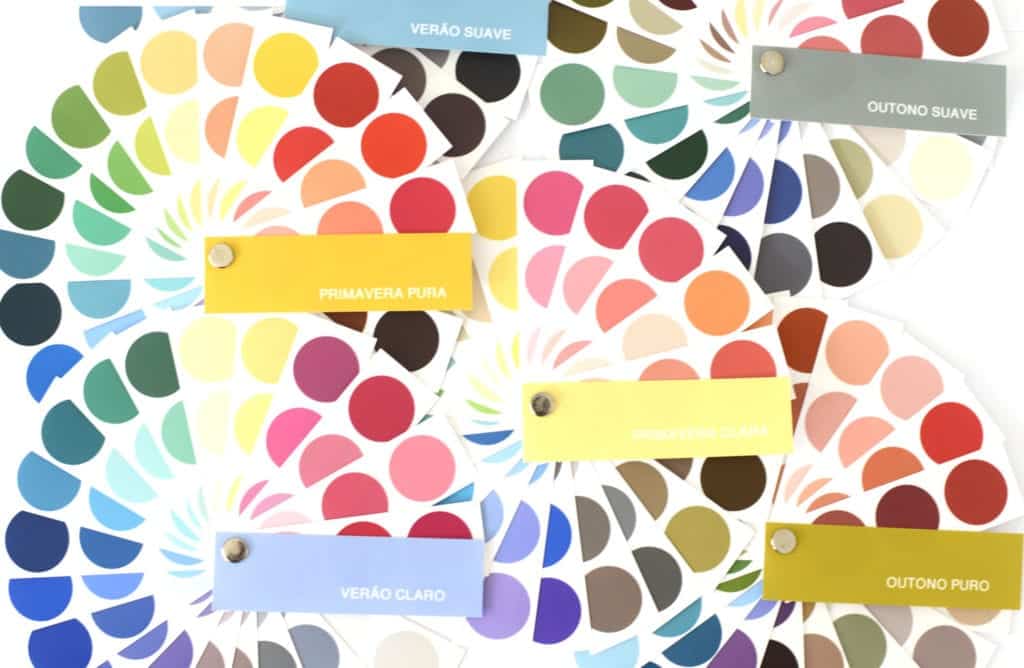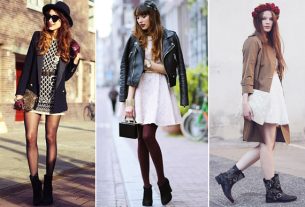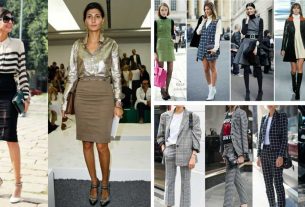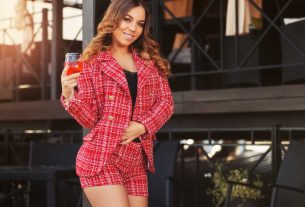Personal coloring analyzes the colors that best harmonize with each person, identifying their skin tone, hair, eyes and veins.
At the turn of the last century, studies began on colorimetry, which is basically the study of colors. Personal coloring is within this study. She analyzes the colors that best harmonize with each person, identifying their skin tone, hair, eyes and veins.
Initially, the artists Chevreul, Ostwald, Munsell, Itten and Dorr were responsible for the beginning of color studies in the last century. Then, the Bauhaus school in the 1920s enhanced this base and delved deeper into the study of personal coloring.
The great pioneer of the study of personal coloring was the American artist and stylist Suzanne Caygill, who published, in the 1940s, the book Method of color analysisas well as in the 1980s he released two more books, which became the basis of studies in the area: Color the essence of you e The academy of color.
Still in the 1980s, researcher Carole Jackson released the book Color me beautifulwhich exploded in the United States, boosting the profession of personal stylist. Be that as it may, it was she who brought the definition of the four seasons of the year to each person’s colors.
Let’s talk about personal coloring
Beforehand, we can say that this harmonization can transform the image you convey to people. It can also make you much more beautiful in your own eyes.
Of course, we understand that not everyone suits every color. Not even the basic ones, like black and white. So, how do you discover the colors that look best on you?
At this point, the study of personal coloring comes into play, which will identify your personal colors and determine the best combinations. In this analysis we identify: the temperature, whether it is hot, neutral or cold; depth, which can be light, medium or dark; the intensity, such as opaque, medium or bright and finally, the contrast, which is high, medium or low. First, let’s understand a little about each of them.
Temperature
Temperature determines whether you look better in warm colors, cool colors, or both. The professional who studies personal coloring knows how to carry out this identification with greater precision, despite this, you can take advantage of some tips.
We will try? Answer the following questions:
- Do you look better with gold or silver accessories?
- When you sunbathe, do you get red or tan?
- Do your veins have greenish or bluish tones?
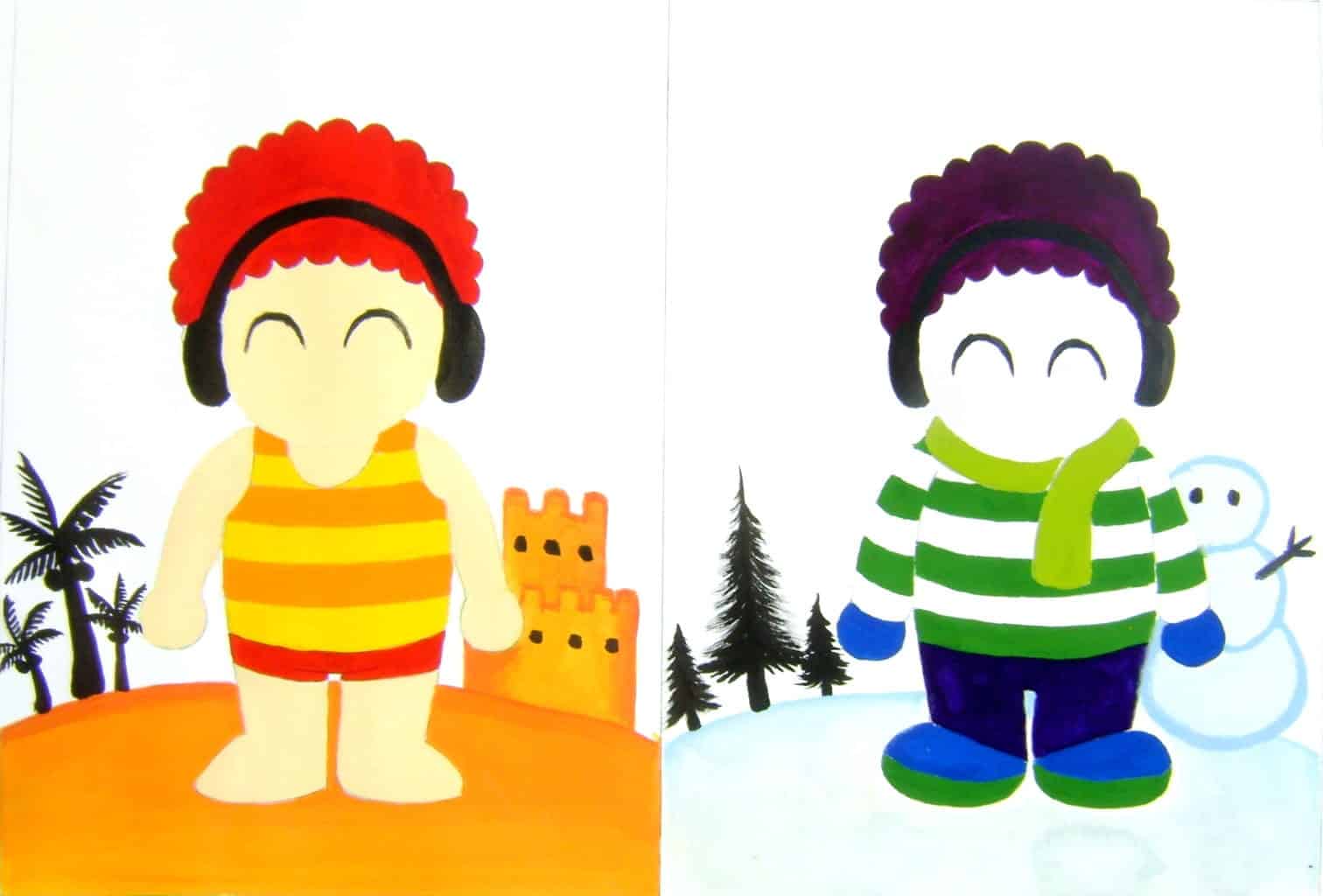
Depth
Depth is certainly linked to how open or not a color is. Using the principle of color mixing, we can understand that the more yellow we add, the warmer it becomes. In other words, the bluer, the colder, right?
Basically depth follows the same logic, however it is applied to black and white. In other words, the blacker a color is, the deeper it is and the whiter it is, the softer it is. But how do you know its depth? Answer again:
- Do you look better in light or dark colors?
- Do you feel better with brownish or grayish tones?
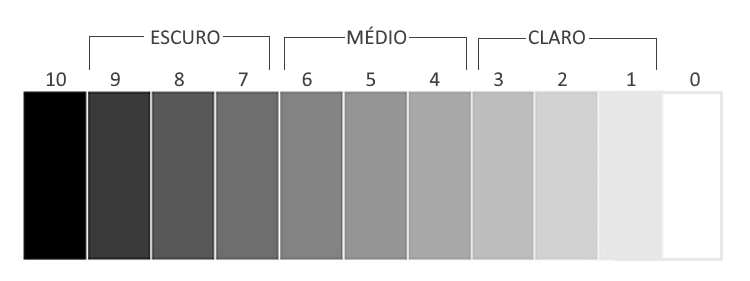
Intensity
The intensity will determine how bright and saturated the color is or how much more opaque it is. The more saturated, the more yellow, the brighter and more intense. On the other hand, the more pastel or bluish it is, the more opaque. For example, the pink one below:
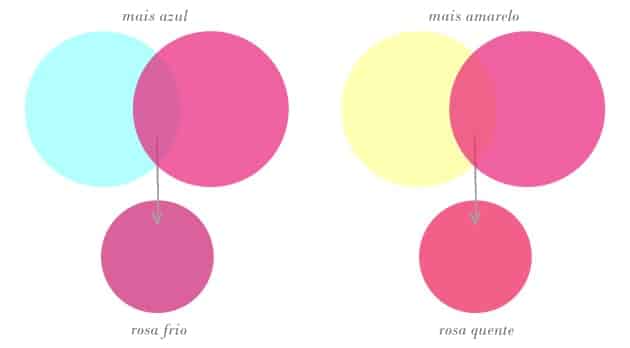
Contrast
Contrast is basically the difference in tone between your eyes, hair and skin. If your skin and hair are light, or skin and hair are dark. so its contrast is very low, as there are no major differences between the elements. However, if you have dark skin and light hair, or vice versa (light skin and dark hair), your contrast is high. But how to use it? Always try to repeat your contrast in the colors you use, to look harmonious, as well as beautiful.
A tip to find your contrast easier is to take a photo of yourself without makeup and your face, and put it in black and white.
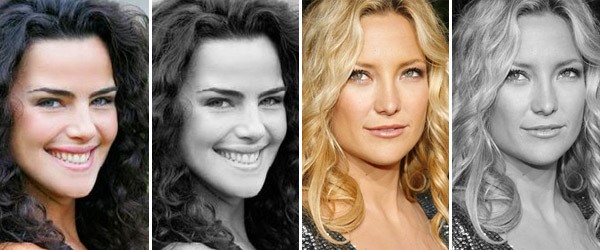
Now that we know the basic principles of personal coloring, let’s understand palettes better. They are defined by the principles above and determined as: summer and winter, made up of cold colors and spring and autumn, made up of warm colors.
There are questions about why summer is cold. Although it appears to have warm tones, if we analyze images that reflect summer we will see a lot of blue, which is a cold color.
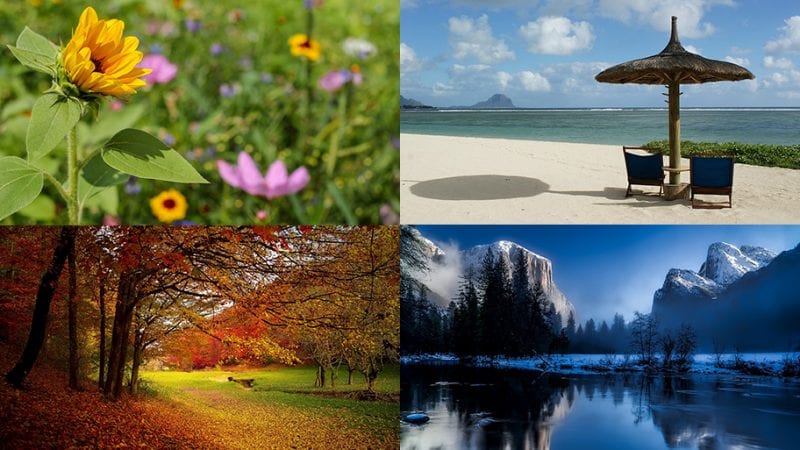
Seasonal Personal Color Palettes
The seasonal palette varies according to each person and their undertones. Therefore, it is worth remembering that your skin’s undertone does not change, regardless of whether you are tanned. However, your hair and eyes can change color and thus alter your color palette. See the types of palettes below:
Spring Palette
Spring colors are warm, so we will see lots of yellows, oranges and vibrant colors.
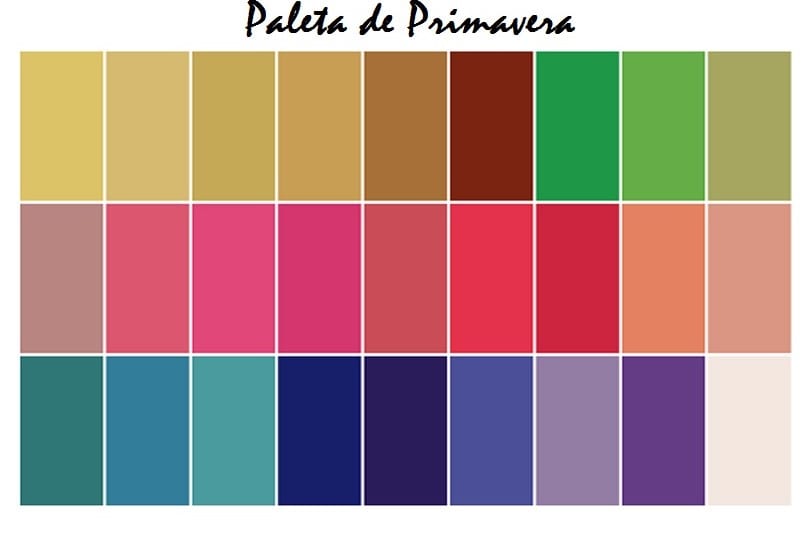
Summer Palette
As it is predominantly cold, we will have colors like blues and pinks leading towards gray and many pastel tones.
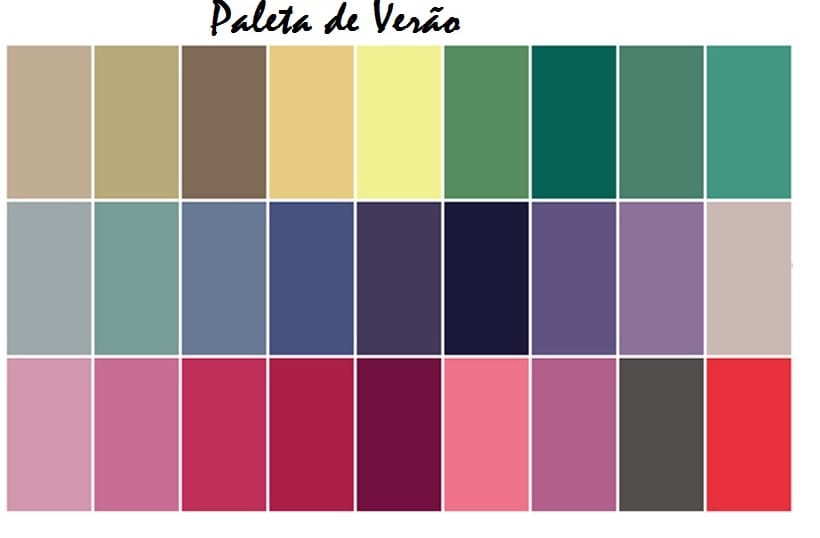
Autumn Palette
Just like spring, it is made up of warm tones, but here they will be more closed and towards brown.
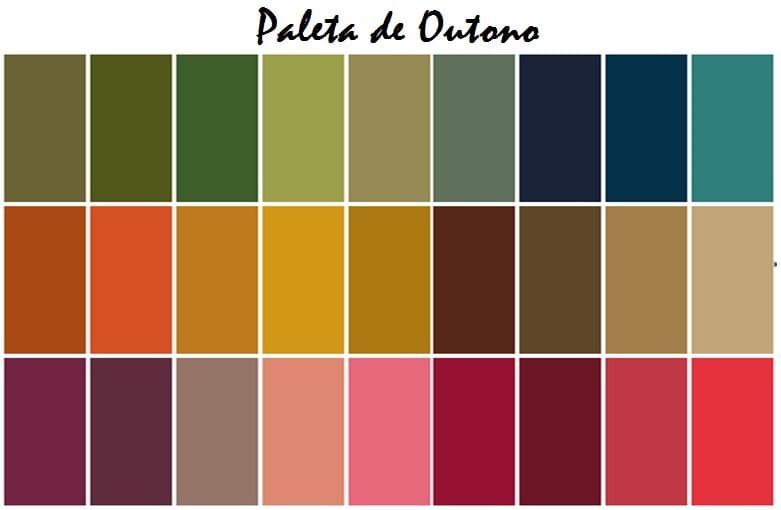
Winter Palette
Basically we will have cold colors and light tones, such as white and blues.
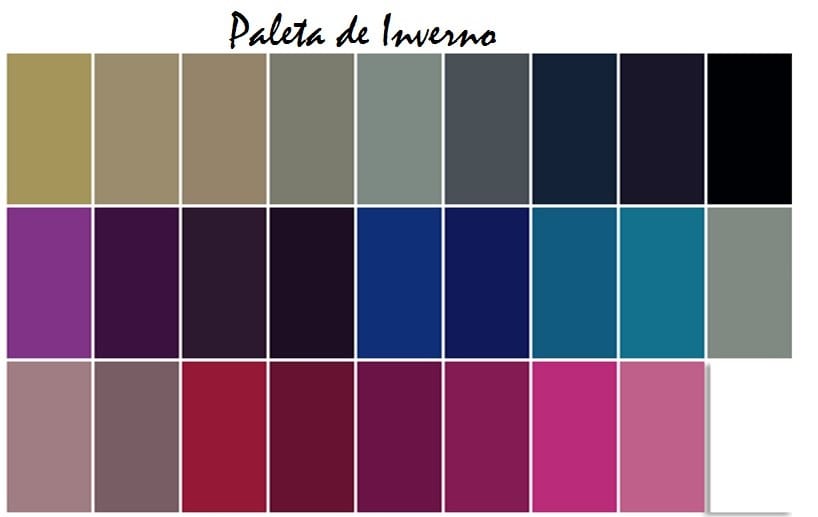
A very simple test for you to identify your palette is the one below, created based on the book “Visagismo: color and shape”.
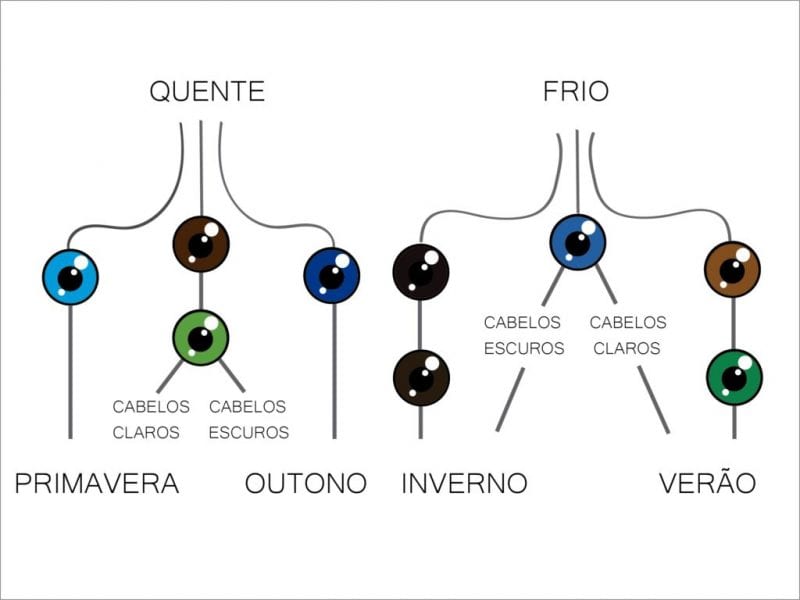
Personal coloring, in addition to being a great exercise in self-knowledge, above all changes the image you convey to people. Because when you wear colors and combinations that flatter you, your eyes tend to shine; your skin will also appear softer and more vibrant, with a smoother texture, without blemishes, wrinkles and expression lines; your appearance will be younger and healthier; teeth tend to become whiter and eye color more intense.
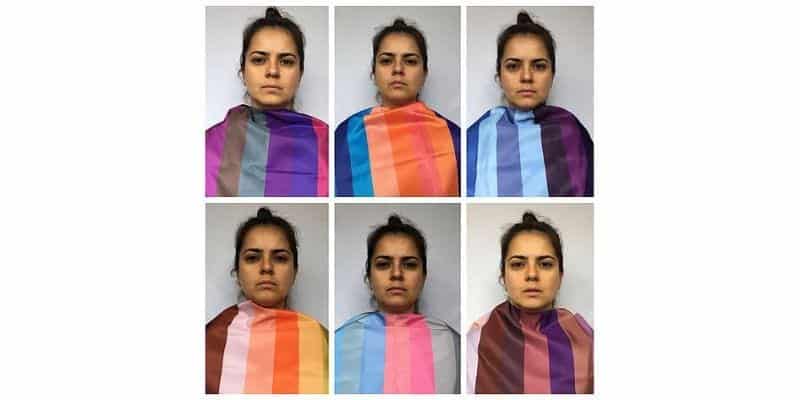
Models
To make it easier to understand and for you to be able to identify your color palette, we have brought some examples of famous people and their colors.
Primavera: Blake Lively, Emma Stone, Scarlet Johanson
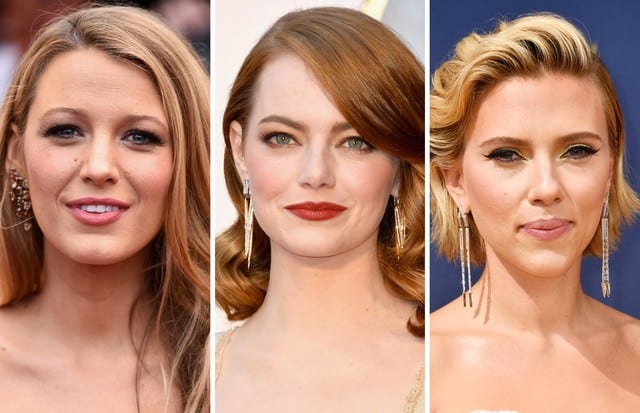
Summer: Queen Elizabeth II, Cate Blanchett, Sarah Jessica Parker
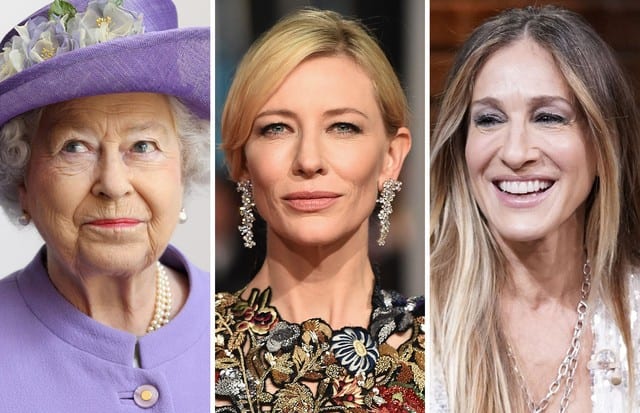
Autumn: Gisele Bündchen, Beyoncé, Sandra Bullock
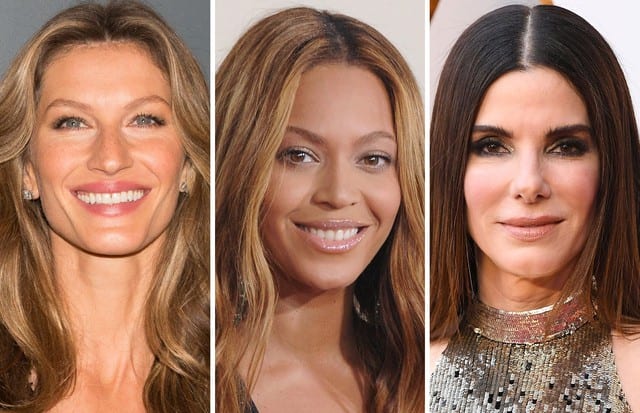
Inverno: Anne Hathaway, Megan Fox, Lcy Liu
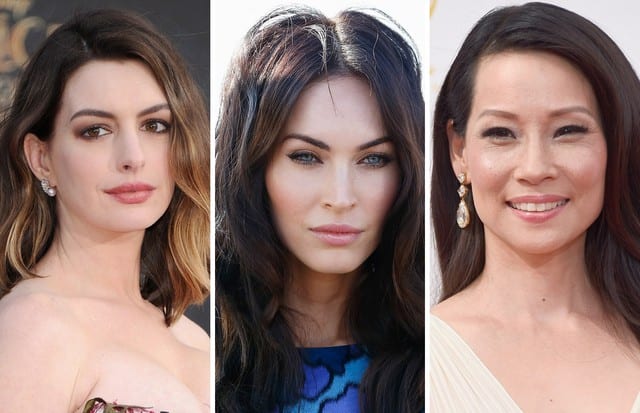
Anyway, do you feel like discovering your color palette and going out and rocking it? Look for a professional in the area, who will help you find your perfect pairing. While he doesn’t do this, follow our tips that will help you a lot.
Sources: Vestindo Autoestima, We Fashion Trends, Alice M Estilo, Vogue.
Images: Vestindo AutoEstem, Cloud Style, We Fashion Trends, Pinterest, Bureau de Estilo

